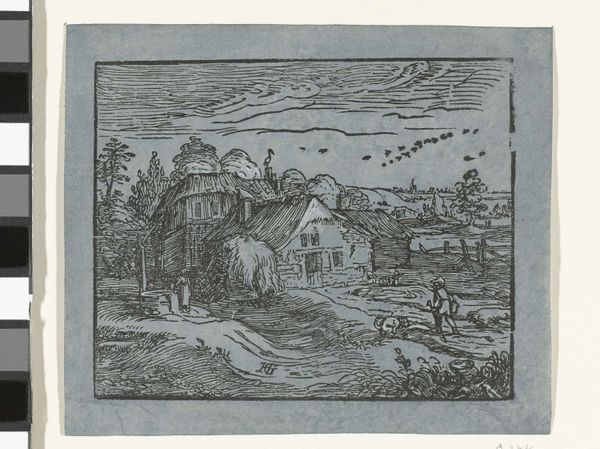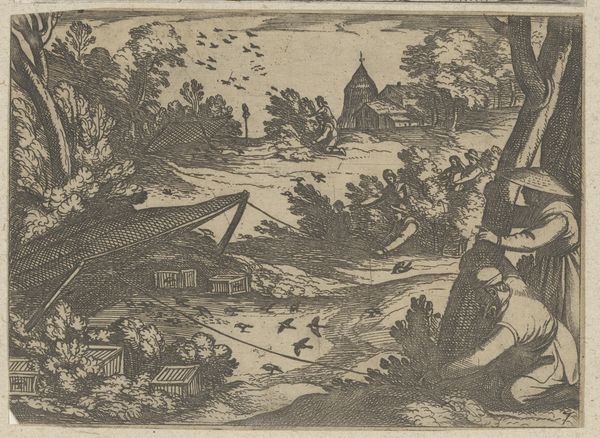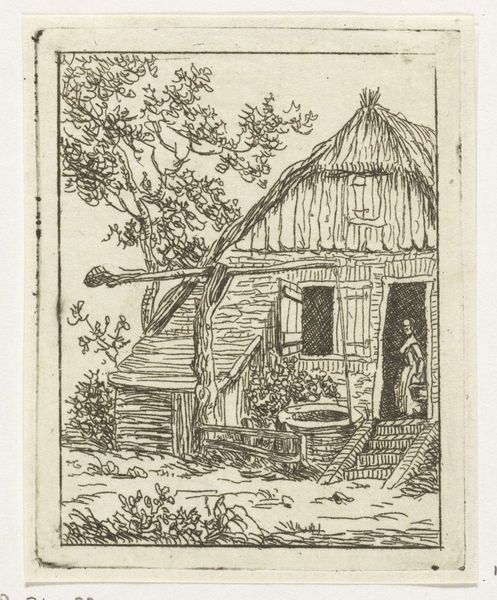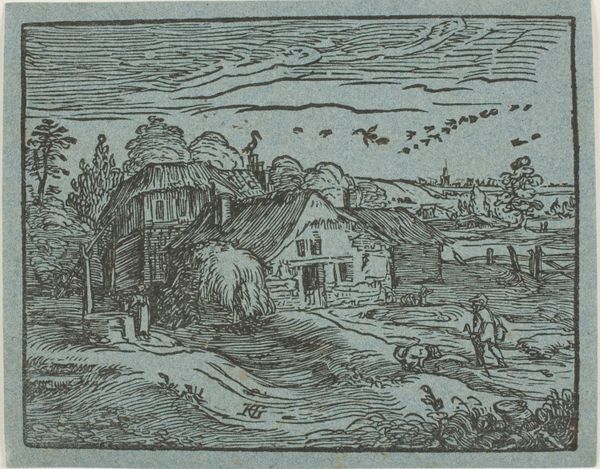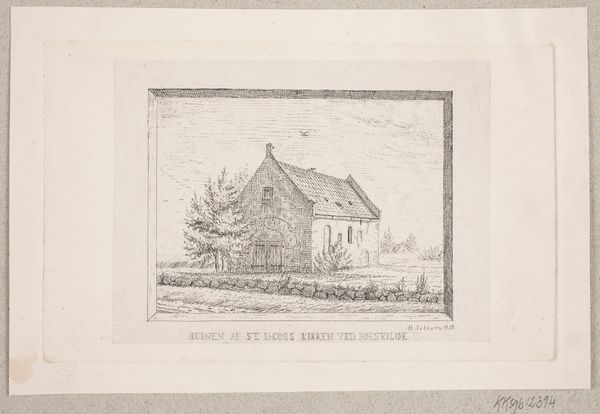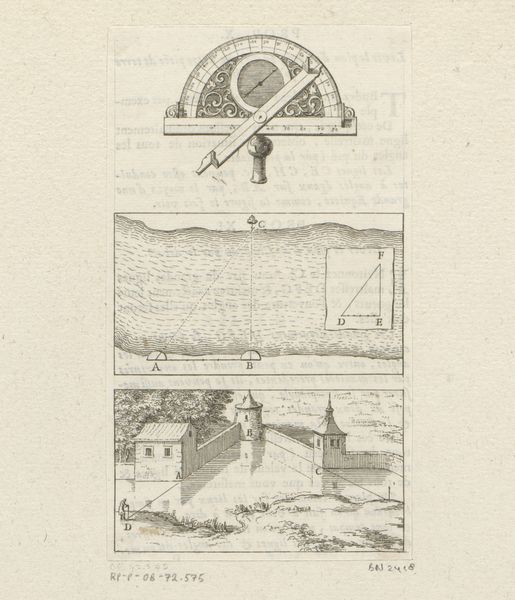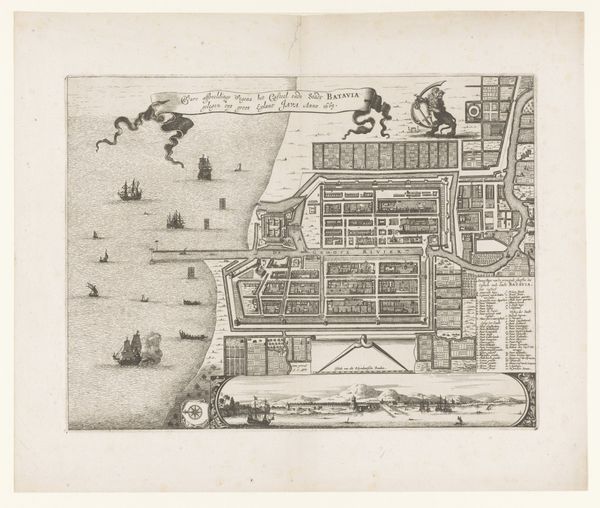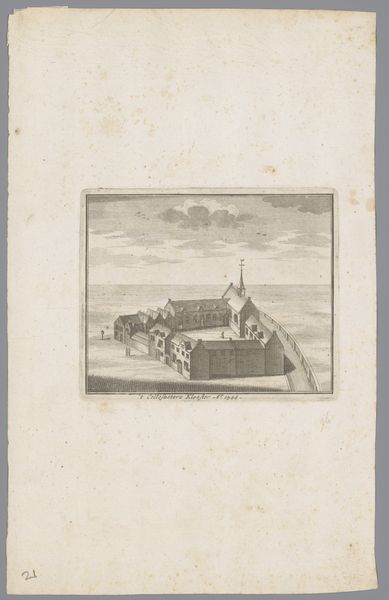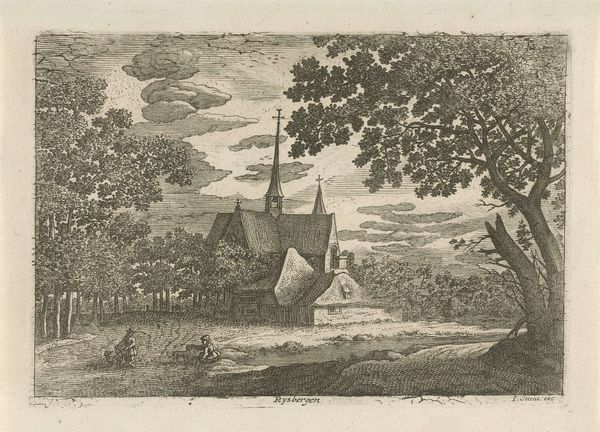
print, woodcut, engraving
#
narrative-art
# print
#
landscape
#
11_renaissance
#
woodcut
#
northern-renaissance
#
engraving
Dimensions: height 50 mm, width 70 mm
Copyright: Rijks Museum: Open Domain
Editor: This is a woodcut or engraving, titled "Zondvloed," dating from 1530 to 1533. It’s attributed to an anonymous artist. Looking at it, I'm immediately struck by the almost claustrophobic feeling, despite depicting something so vast as a flood. How do you interpret this work? Curator: Well, considering this piece from a historical and social context, one might consider the role of printmaking during the Renaissance. The circulation of imagery, especially concerning religious narratives like the Flood, held considerable power. Think about it: these prints brought biblical stories to a wider audience, influencing social norms and religious understanding. The style also speaks volumes about the Northern Renaissance, where landscape was gaining traction, wasn’t it? Editor: That's a good point, its distribution is probably key to understanding it. Do you see the flood as symbolic of societal anxieties during that time? Curator: Precisely. This image isn’t just a literal depiction of a biblical event; it reflects the anxieties and socio-political turmoil of the era. Disasters, both natural and man-made, were often interpreted as divine punishment. This particular image has its own institutional history to bear, being hosted in the Rijksmuseum. What values do you think museums, and collecting, represent to modern audiences when exhibiting images such as these? Editor: That’s thought-provoking, museums definitely act as filters and present the artwork through specific lenses. So by showcasing "Zondvloed," it also encourages us to examine how the Renaissance viewed humanity's relationship with a higher power? Curator: Exactly. And also how cultural institutions frame that narrative for contemporary viewers, impacting our own social and political landscapes. Editor: I learned a lot about looking at it in its historical context, particularly the distribution of Renaissance prints. Curator: It gives another dimension to our perception, doesn’t it? Recognizing the museum's impact on meaning-making as well.
Comments
No comments
Be the first to comment and join the conversation on the ultimate creative platform.
